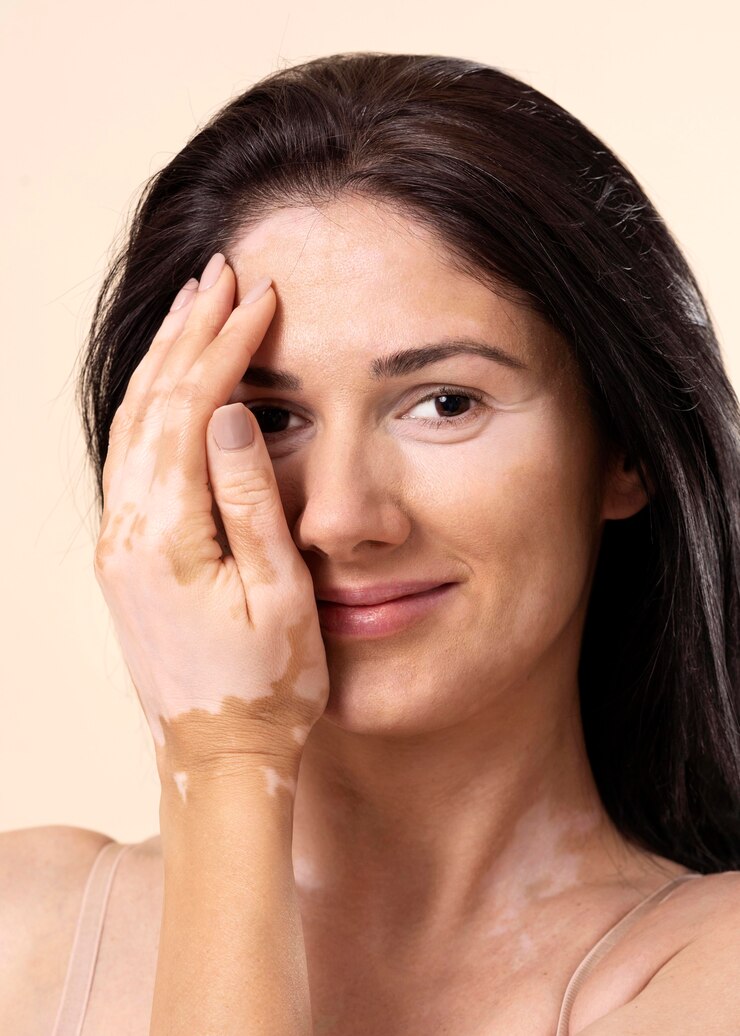
When dead cells or skin proteins remain under the skin’s surface, white patches may develop. They may also be the outcome of depigmentation, or the loss of color, brought on by vitiligo or another illness. White skin spots are not usually a reason for concern and do not cause major symptoms. It is important, however, to have white spots checked by a dermatologist to understand their cause and the best way to treat them.
Causes and symptoms
- Various health conditions and factors can cause.
- white spots to develop on different body parts.
- Common causes of white spots on the skin include:
“Understanding Sunspots: Causes, Treatment, and Prevention”

White patches on the skin that lack pigment are known as sunspots.
They usually appear on the legs first and then spread to the arms, upper back, and face. These spots are generally harmless and don’t cause any symptoms.
Researchers haven’t identified the exact cause of sunspots, but it’s believed that a melanin deficiency, the skin pigment, may be responsible. Sunspots tend to run in families and are most likely to occur after age forty.
Although excessive sun exposure without protection may increase the risk of skin cancer, sunspots don’t always indicate cancer development. They’re primarily a cosmetic concern and can be safely ignored.
“Deciphering Tinea Versicolor: Understanding the Causes, Symptoms, and Treatment”

In individuals suffering from tinea versicolor (TV), the fungus that typically resides on the skin’s surface proliferates uncontrollably.
Dry, scaly, itchy areas that are either lighter or darker than the surrounding skin are caused by the fungus. These patches frequently group together and typically expand somewhat slowly.
There are situations where TV symptoms are only apparent in those with tans. The illness is quite common, and warm, muggy settings tend to accentuate symptoms.
Light-colored spots on skin

Pityriasis alba (PA) is a common non-cancerous skin disorder that causes red, itchy, and scaly spots on the skin. These spots eventually heal and leave behind small white dots. PA typically affects children between the ages of 3 and 16 and appears on the face, neck, shoulders, and arms.
Although the exact cause of PA is unknown, researchers believe it to be a mild form of eczema or atopic dermatitis.
Pigmenting pityriasis alba is a rare variant of PA that may go unnoticed. It results in bluish-white, scaly areas surrounded by pale skin patches. Like PA, this condition mostly affects the face and usually affects young people.
Skin pigmentation loss
White skin patches show up in vitiligo patients’ areas where skin pigment, or color-producing cells, have been damaged.
It is unclear to researchers what causes vitiligo. It could be an autoimmune disease, in which healthy cells are inadvertently damaged by the immune system.
White spots can appear slowly or spread fast, and they usually appear in areas that are exposed to light. The majority of patients initially experience skin discoloration in their 20s, and vitiligo appears to run in families.
Milia

Milia are white, fluid-filled sacs that are firm, elevated, painless, and 1-4 mm in diameter when they form on the skin’s surface.
When keratin, a protein that aids in hardening the skin’s outer layer, becomes stuck under the skin and forms a fluid-filled sac, primary milia can happen at random.
Trauma from incidents such as dermabrasion, tissue injury, blistering, and skin inflammation can result in secondary milia. Certain drugs may potentially cause secondary milia as a side effect.
An extremely unusual disorder known as milia en plaque results in raised, red, scaly, itchy patches of skin around the milia. There is presently no recognized cause for milia en bacteria, which tends to appear sporadically in healthy skin.
However, according to researchers, milia en plaque can be an indication
The preferred treatment for white spots on the skin depends on the cause of the spots.
Sunspots
Apart from skin color changes, sunspots usually don’t produce any symptoms, so many individuals choose not to have treatment.
Treatment can be necessary if the white spots are visible or cover a large area of the body.
Options for treatment consist of:
- applying sunscreen to all exposed skin parts daily.
- Online brand comparisons are available.
- Refraining from overexposure to the sun
- Steer clear of artificial tanning beds
- This procedure: is a method of manually removing the skin’s outer layers
Online retailers provide hydrocortisone and other topical steroid creams.
retinoid creams for topical use, such as a moisturizer and a substance called
Steroid and retinoid creams cause cell turnover and the removal of the outer layers of skin.
Should I be concerned about white spots?
White patches on the skin usually don’t need to be treated medically.
Nonetheless, it is crucial to have a dermatologist examine white spots to rule out any underlying medical issues.
Additionally, it is suggested that people discuss white spots with a doctor if they:
persist despite receiving a minimal amount of care for a few weeks, spread to different areas of the body, and result in symptoms like pain, itching, or emotional distress
